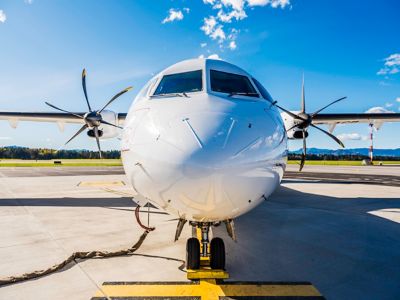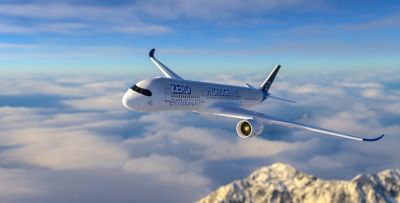-
Ansys is committed to setting today's students up for success, by providing free simulation engineering software to students.
-
Ansys is committed to setting today's students up for success, by providing free simulation engineering software to students.
-
Ansys is committed to setting today's students up for success, by providing free simulation engineering software to students.
-
Contact Us -
Careers -
Students and Academic -
For United States and Canada
+1 844.462.6797
ANSYS BLOG
February 13, 2023
Designing the Electric Airplane: How Simulation is Driving the Future of Flight
Leading the global push for environmental sustainability, the electrification of aviation is no longer merely a distant dream. Airlines need to break even in an industry where profit margins can be razor-thin, and fuel represents almost half their operating costs — making it one of their most sought-after methods to reduce overhead expenses. With this goal top of mind, engineers are hard at work developing pioneering strategies that could revolutionize air travel as we know it, and with advances in simulation technology, they can now design and test electric airplanes in a virtual environment before they ever take to the skies. This speeds up the development process for electric aircraft and allows for more experimentation and iteration than ever before.

What are Electric Airplanes and How Do They Work?
In simplest terms, an electric airplane is powered solely by electricity from renewable energy sources, rather than fossil fuels. Electric aircraft are expected to be ideal for short flights of up to several hundred miles, and their design eliminates much of the weight associated with fuel. Despite relatively weak performance compared to traditional aircraft designs, electric-powered planes can still deliver impressive ranges that enable eco-friendly flight within cityscapes or around remote wilderness areas. Although we are still far from the widespread adoption of all-electric airplane technology, it's exciting to think how these airborne marvels might revolutionize our understanding of what is possible with green energy initiatives.

Electric Aircraft Industry Trends
Advancements in battery and electric airplane motor technology and efficient aerodynamic design will determine the future of electric aviation. Companies are exploring battery concepts that have never been seen before, such as distributed propulsion across multiple skids or electric airplane motor hubs embedded directly into the wings for more significant thrust potential.
In fact, top global industry players are pushing for its advancement. For example, Heathrow Airport announced flight incentives1 for hybrid and fully electric planes to encourage widespread use, while Collins Aerospace announced it would establish a high-power facility dedicated to developing new efficient motors2. BAE Systems and Wright Electric announced intent to partner3 on pioneering control systems that will enable this sector's growth. And Air Race E, backed by Airbus, is a series of international competitions that serve as a testbed for advancing state-of-the-art aviation technology and design concepts that will drive more sustainable aviation.
Yet, the electrification of the aviation industry brings with it unique challenges. From battery technologies for longer-range flights to establishing infrastructure for in-flight charging, every area needs specialized attention if this new technology is to be adopted on a grand scale.

Simulation is Helping to Overcome Electric Airplane Design Challenges
When such a radical shift is made, engineers need access to build a body of data as quickly as possible to demonstrate safety and show performance. That’s where simulation comes into play in the design and development process for electric aircraft.
Through computer simulations, engineers can simulate every stage of production of an electric aircraft, from initial concept to flight testing. Before physical testing, simulations help identify problems or issues early in the design process. Simulation tools are also effective in helping engineers optimize designs and components for greater efficiency, including improved aerodynamics, reduced weight, and increased performance. Additionally, simulations can help reduce manufacturing costs by improving reliability and reducing rework caused by design flaws or errors.
Simulations also allow engineers to virtually experiment with various components, such as motors and batteries, to determine their impact on performance and cost analysis for different configurations. This helps them make informed decisions based on reliable data when selecting components for the construction of an airframe for an electric aircraft. Furthermore, through simulation software, engineers can visualize what their final product would look like long before it has been constructed — allowing them to spot potential problems ahead of time.
Overall, simulation offers a powerful tool that allows designers of electric aircraft to stay ahead of the competition while designing safer and more efficient vehicles at lower costs than traditional methods would allow. With its ability to quickly test ideas without physical prototypes or extensive trial-and-error processes, simulation provides a powerful weapon in the arsenal of anyone involved in the development of electric airplanes today.
Ansys offers simulation software and consulting experience to help engineer and design teams focus on several areas critical to electric airplane research and design. This includes battery management aimed at delivering more power with less weight; creating small electric machines that are reliable and efficient; electric power train design to overcome thermal and high voltage challenges; and testing to help ensure safe system-wide integration.
To learn more about electric airplanes, watch the webinar Fail-Safe Hybrid Electric Propulsion System Design for Aircraft.
See What Ansys Can Do For You
See What Ansys Can Do For You
Contact us today
Thank you for reaching out!
We’re here to answer your questions and look forward to speaking with you. A member of our Ansys sales team will contact you shortly.











